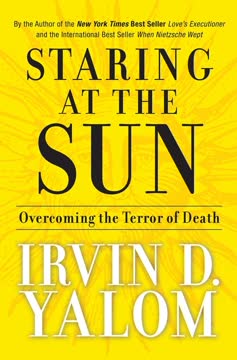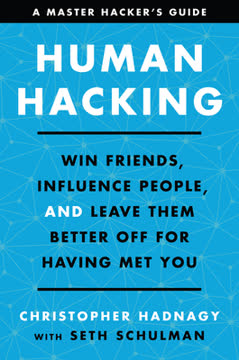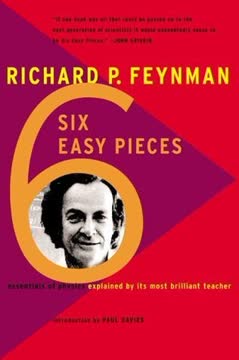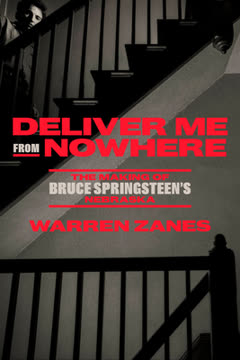Key Takeaways
1. Numbers Illuminate Life's Hidden Patterns
From my family I learned that numbers belong to life.
Ubiquitous numerical patterns. The book emphasizes that numerical patterns are not confined to textbooks but are inherent in our everyday experiences. The author's large family, for instance, embodies the decimal system, with their interactions mirroring arithmetical operations like division and combination.
Sets and subsets. The concept of sets is introduced to categorize and understand the world around us. The author's family is presented as a "set" of nine members, illustrating how numbers define categories and relationships.
Beyond mere counting. The book suggests that numbers are not just for counting but also for perceiving and thinking. It challenges the reader to recognize the numerical dimensions that give character and form to our world, much like colors in a painting.
2. Imagination and Math are Intertwined
Like literary fiction, mathematical imagination entertains pure possibilities.
Mathematics as imaginative play. The book posits that mathematics, like literature, allows us to explore possibilities beyond our immediate experience. It encourages readers to imagine endless books, count to infinity, and ponder extraterrestrial civilizations.
Pure possibilities. The author emphasizes that mathematical imagination is "pure" in the sense that it is unconstrained by prior experience or expectation. This freedom allows us to wonder "what if" and to explore concepts that may seem impossible.
Imagination belongs to everyone. The book asserts that the capacity for mathematical imagination is not limited to experts but is a universal human trait. It encourages readers to embrace their own imaginative abilities and to see the world through a mathematical lens.
3. Counting Systems Reflect Cultural Values
Ask an Icelander what comes after three and he will answer, “Three what?”
Cultural specificity of counting. The book explores how different cultures have developed unique counting systems that reflect their values and priorities. Icelandic, for example, has multiple words for "four," depending on what is being counted.
Beyond abstract numbers. The book contrasts the abstract nature of numbers in English with the more tangible and context-specific numbers in languages like Icelandic and Chinese. This highlights how language shapes our perception of quantity.
Numbers and ethics. The book also touches on the ethical dimensions of counting, noting that some cultures believe counting people directly brings bad luck. This illustrates how numbers can be intertwined with cultural beliefs and taboos.
4. Form Matters in Learning and Understanding
Numbers, properly considered, make us better people.
Succinctness and simplicity. The book emphasizes the importance of form in conveying mathematical truths, arguing that succinct and simple phrasing is more memorable and effective. This is compared to the art of crafting proverbs.
The power of tradition. The book suggests that traditional forms of presenting mathematical facts, such as times tables, carry the weight of generations and can be more impactful than modern methods.
Beyond rote memorization. The book advocates for a deeper understanding of mathematical concepts, encouraging learners to explore patterns and relationships rather than simply memorizing facts.
5. Intuition is a Valid Path to Mathematical Understanding
There is no thing that half of it is nothing.
Beyond textbook methods. The book challenges the notion that there is only one "correct" way to solve a mathematical problem, arguing that intuition and personal reasoning can be equally valid.
Learning from mistakes. The book highlights the value of mistakes in the learning process, suggesting that they can lead to deeper insights and a more nuanced understanding of mathematical concepts.
The power of real-world experience. The book emphasizes the importance of connecting mathematical concepts to real-world experiences, arguing that this can make them more meaningful and accessible.
6. Zero: A Profound Concept Shaping Thought
Thou art an O without a figure… Thou art nothing.
The paradoxical nature of zero. The book explores the concept of zero as a paradoxical number that signifies both nothingness and size. It highlights how this concept can be difficult to grasp, especially for young learners.
Zero in Shakespeare. The book connects the mathematical concept of zero to Shakespeare's works, arguing that the playwright was fascinated by the presence of absence and the power of negation.
Zero and imagination. The book suggests that the concept of zero can expand our imagination, allowing us to think about the potential of self-effacement and the shifting of perspectives.
7. Rhetoric and Logic are the Bedrock of Mathematical Thought
A [mathematical] proof is a rhetorical device for convincing someone else that a mathematical statement is true or valid.
Mathematics as persuasion. The book argues that mathematical proofs are not simply objective demonstrations of truth but also rhetorical devices used to persuade others.
Ancient Greek influence. The book traces the development of rhetoric and logic in ancient Greece, highlighting how these skills were honed in the law courts and public assemblies.
Euclid's Elements and Lincoln's speeches. The book connects Euclid's Elements to the rhetoric of Abraham Lincoln, arguing that both used definitions and axioms to construct persuasive arguments.
8. Infinity: A Realm of Endless Possibilities and Paradoxes
You who measured the sea and the earth and the numberless sands... are now confined in a small mound of dirt.
The allure of big numbers. The book explores the human fascination with large numbers, from Archimedes' attempt to count the grains of sand in the universe to the invention of the googol and googolplex.
Infinity in different cultures. The book highlights how different cultures have conceptualized infinity, from the sutras of India to the paradoxes of ancient Greece.
The limits of human comprehension. The book acknowledges that even the largest numbers we can conceive of are finite and that the realm of infinity lies beyond our full comprehension.
9. Complexity Yields Recognizable Patterns
It is all to do with how the sides of the snowflakes reflect light.
The beauty of snowflakes. The book uses the example of snowflakes to illustrate how complexity can give rise to recognizable patterns. It explores the science behind snowflake formation and the various ways in which they are classified.
Cultural interpretations of snow. The book notes how different cultures have interpreted snowflakes, likening them to blossoms, feathers, or fleece.
Snow as a metaphor for complexity. The book suggests that snow, like numbers, can tell us something about complexity and that this is why we never tire of its wonder.
10. Cities are Embodied Numerical Patterns
We wish to see ourselves translated into stone and plants, we want to take walks in ourselves when we stroll around these buildings and gardens.
Cities as expressions of thought. The book argues that cities are not just physical spaces but also embodiments of numerical patterns that contain and direct our lives.
The grid system of New York City. The book explores the history of New York City's grid system, highlighting how it imposed order and efficiency but also obliterated natural spaces.
Invisible cities. The book touches on the concept of "invisible cities," those that exist only in the imagination of their creators, such as Plato's ideal city and King Camp Gillette's Metropolis.
11. Probability Guides Our Understanding of the Universe
Modesty, backed by a probability little short of demonstration, forbids the thought that we are the sole thinkers in this great universe.
The search for extraterrestrial life. The book explores the history of the search for extraterrestrial life, from the ancient Greeks to modern astronomers like Frank Drake.
The Drake equation. The book introduces the Drake equation, a probabilistic argument used to estimate the number of communicating civilizations in our galaxy.
The Fermi paradox. The book touches on the Fermi paradox, which questions why, if there are so many potential civilizations, we have not yet made contact with any of them.
12. Time is Relative and Shaped by Experience
The same space of time seems shorter as we grow older.
Subjective experience of time. The book explores how our perception of time changes as we age, with the past seeming to expand and the future seeming to shrink.
Cultural variations in time perception. The book contrasts our clock-based understanding of time with the more natural and activity-based timekeeping of some tribal cultures.
The power of memory and imagination. The book suggests that our memories and dreams can allow us to transcend the limitations of time and to experience the past in a more vivid and meaningful way.
Last updated:
Review Summary
Thinking in Numbers receives mixed reviews, with readers appreciating Tammet's unique perspective on mathematics and its connections to everyday life. Many find the essays insightful and beautifully written, praising Tammet's ability to make complex concepts accessible. However, some critics note a lack of depth in certain chapters and occasional factual errors. The book's interdisciplinary approach, combining mathematics with literature, history, and philosophy, is generally well-received. Overall, readers find it thought-provoking, though opinions vary on its effectiveness in changing perceptions of mathematics.
Similar Books






Download PDF
Download EPUB
.epub digital book format is ideal for reading ebooks on phones, tablets, and e-readers.





